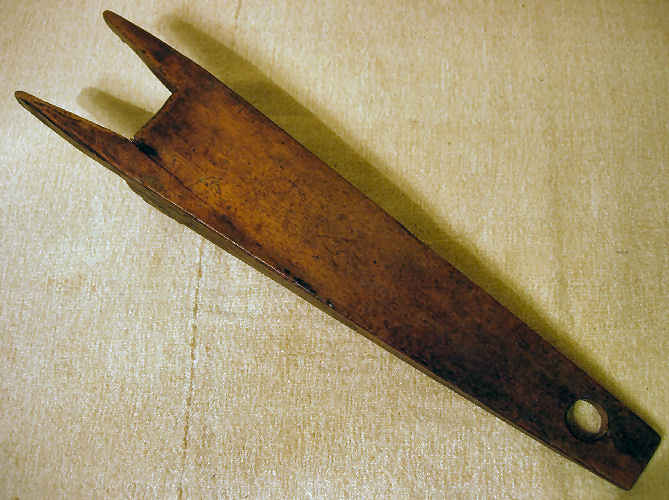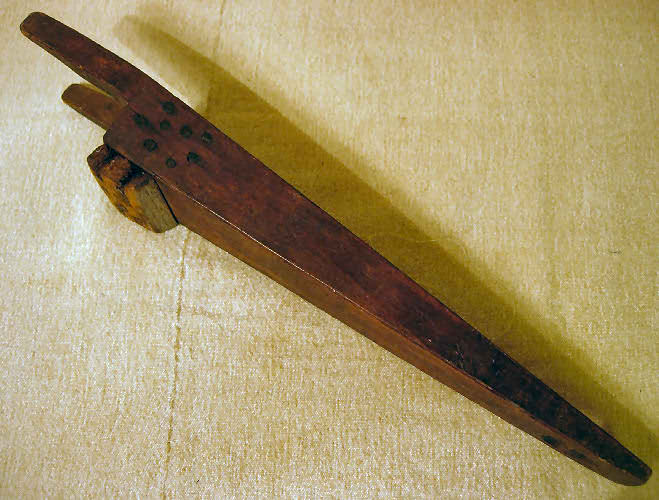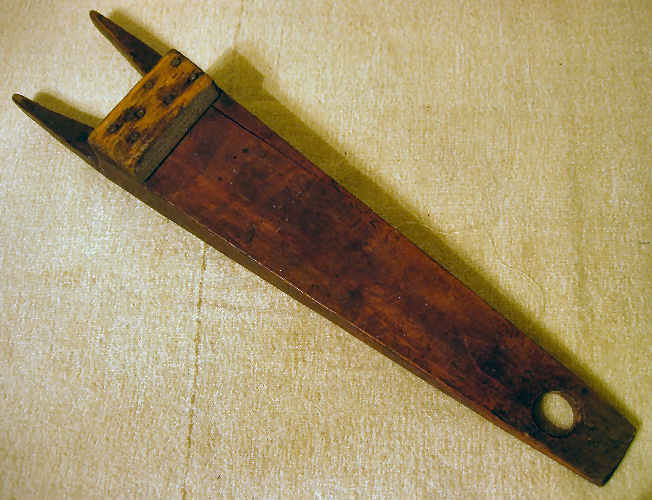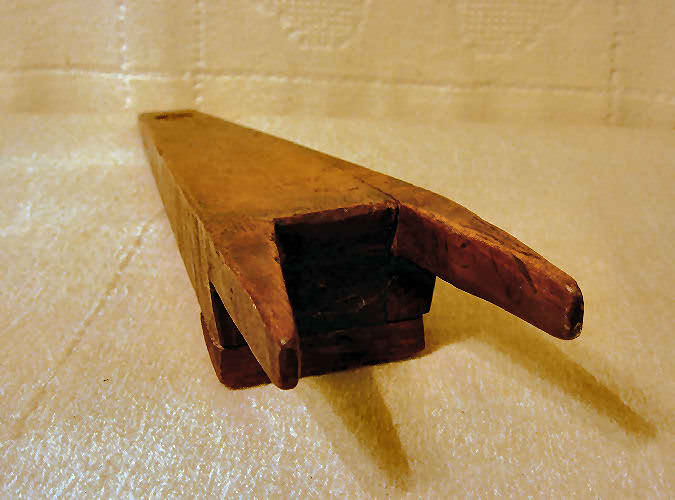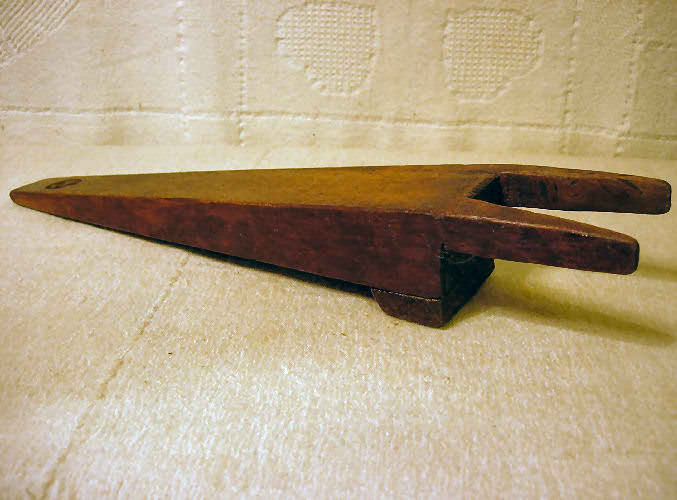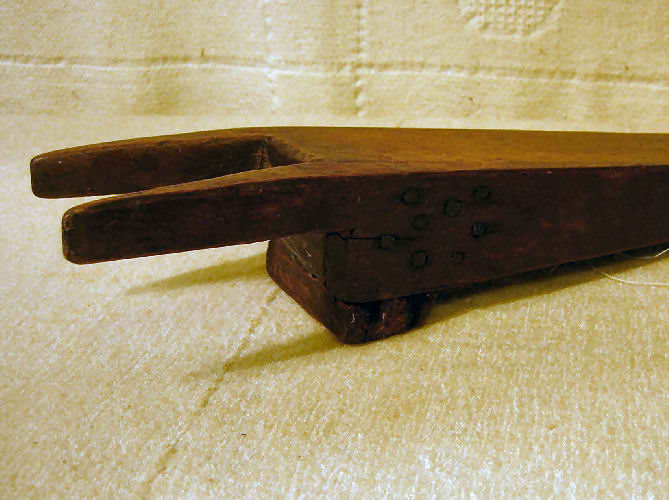

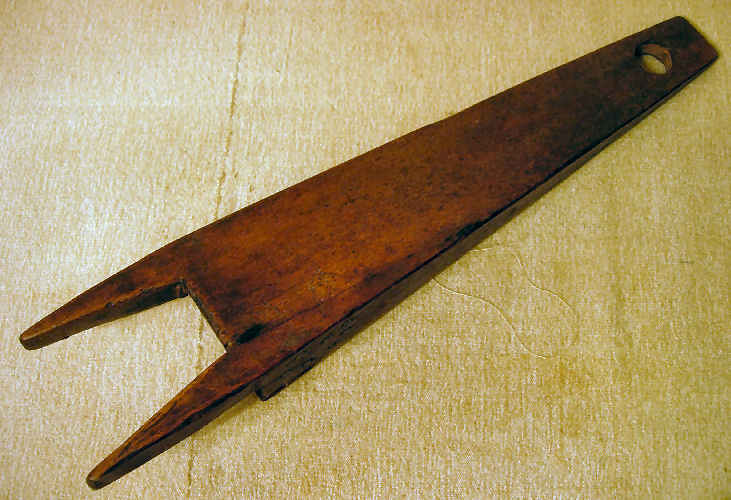
| Boot Jacks were simple tools used to assist in removing one's boots. They were generally used by men who wore pull-on boots. They were not needed for removing buckle or tied shoes such as were worn by women and men at times. Positioning oneself with the wide end of the boot jack facing away from him, the user would place one booted foot onto the flat, top surface to hold the boot jack stationary. Then the other foot would be positioned so that the heel fit into the jaw end. The user would then begin to raise his leg so as to extract his foot from the boot. The user's boot heel would catch on the jaw end of the boot jack, and as the user continued to raise his leg, the boot would be held firmly by the jack and his foot would slip out. The user would then repeat the procedure by reversing his feet, this time placing the bare foot on the jack and his remaining booted foot in the jaw end of the boot jack. It was a much easier way to remove one's boots than by grabbing the foot with both hands and trying to yank the boot off. Boot jacks were easily produced from wood. But they were also often cast in iron or brass. Between 1852 and 1995 there were 239 patents filed in the United States of America for metal boot jacks. Wooden boot jacks were generally cut from a single piece of wood. The example exhibited here was cut from two pieces of wood: the first being the primary shape, and the second piece being a small 'foot' added to the jaw end to raise the jack slightly higher. The user would want the jaw end to be at such a height as to be positioned right where the boot's upper met the heel. If the jaw was lower than the height where the upper and the heel joined, there would be nothing to catch, and the heel of the boot would just slide up out of the boot jack: the boot jack would be useless. The example exhibited here would date from the early to mid 1800s as evidenced by the square head nails that were used to attach the small foot to the primary wooden form. |
